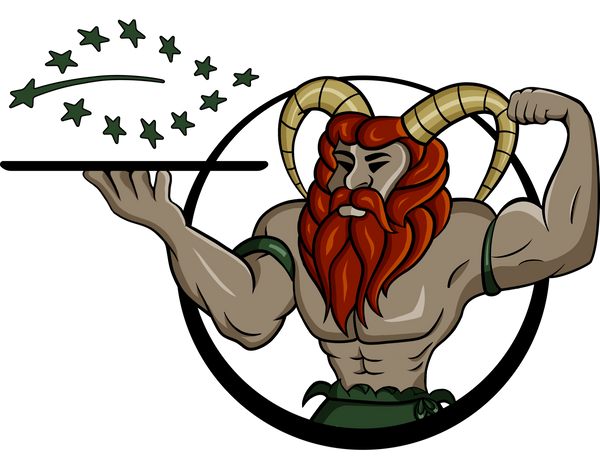
Muscle Loss After 30: Up to 1% Per Year! How to Prevent It
Share
Muscle Loss After 30: How to Prevent 1% Muscle Loss Per Year
After the age of 30, your muscle mass gradually declines, a process known as sarcopenia. This means that you can lose up to 1% of your muscle mass each year, which in the long term translates to a weakened body, loss of mobility, and even an increased risk of chronic diseases. This blog post focuses on how you can slow and maintain the natural decline of muscle mass through exercise, diet, and lifestyle so that you can stay healthy, active, and independent.
Why Muscle Preservation is Important for Seniors
Muscle mass is not only important for athletes, but also plays a fundamental role in the daily functioning of older people. Healthy muscle mass contributes to a faster metabolism, maintenance of bone density, and better balance. Strong muscles also help prevent falls and injuries – risks that can have harmful consequences later in life.
With muscle mass also come mental benefits: exercise and strength training stimulate the production of endorphins, improve mood and increase self-confidence. Think of carrying groceries, opening cans or bottles, lifting your grandchildren. All these factors together make muscle maintenance essential for seniors, so that they can maintain their quality of life.
Exercise as a Weapon Against Muscle Breakdown
Regular strength training has been shown to be effective in maintaining and strengthening muscle mass, even at a later age. By lifting weights or doing resistance exercises, you stimulate muscle growth and increase muscle strength. Studies show that older people who do strength training at least twice a week can better maintain their muscle mass and thus achieve a higher functional level.
In addition, make daily exercise a priority. Even light exercises such as walking, yoga, and cycling can help maintain muscle strength and flexibility, especially when combined with strength training.
The Importance of Protein for Muscle Retention
Protein is essential for building and maintaining muscle mass. As you age, your body needs even more protein to maintain the same muscle mass as before. Protein provides the building blocks for repairing and renewing muscle tissue after exercise. A lack of protein can force the body to break down muscle tissue, leading to loss of muscle strength and volume.
How much protein do you need?
The recommended daily amount of protein for adults is between 1.6 and 2.2 grams per kilogram of body weight per day. For older people, especially those who are active, this can be even higher. Research shows that older people who consume more protein have a lower risk of sarcopenia.
Why Protein Powder as a Supplement?
Since it is not always possible to get enough protein through regular food, a high-quality protein powder can be a valuable addition. Protein powders, such as those from Faunus Nutrition , are completely organic, contain a high protein concentration and are easily digestible. This is especially beneficial for the elderly, who sometimes have difficulty with heavy, animal protein sources such as meat.
Lifestyle Changes That Help Maintain Muscle
In addition to diet and exercise, there are some key lifestyle changes that can support muscle retention:
- Sleep : During sleep, the body recovers and stimulates the production of growth hormone, essential for muscle repair and building.
- Stress Management : Chronic stress increases cortisol levels, which can promote muscle breakdown. Regular relaxation techniques such as meditation or breathing exercises help reduce stress.
- Hydration : Drinking enough water helps optimize muscle function and prevents dehydration, which can lead to muscle damage.
Why Maintaining Muscle at Any Age is a Smart Choice
Muscle is not only important for strength, but also for overall health. Muscle mass plays a role in fat burning, weight management, and blood sugar stabilization. Losing muscle mass can lead to an increased risk of chronic conditions such as type 2 diabetes and heart disease, because muscle helps our bodies process glucose and insulin.
By investing in muscle retention, regardless of your age, you support not only your physical health but also your mental health. It gives you the power to grow older actively, independently and healthily.
Practical Tips for Seniors to Maintain Muscle Mass
Maintaining muscle mass requires attention, but with a few simple steps it can be integrated into daily life. Here are some tips to stay stronger:
-
Spread Your Protein Throughout the Day : As you age, your body processes protein less efficiently at one time. Try to include protein-rich meals at every meal for best results.
-
Start Light Strength Training : You can also effectively maintain muscle mass with light weights of 1-2 kg or with elastics. Strength training is not only for young people, but also essential for the elderly.
-
Choose Highly Digestible Proteins : Fermented proteins , such as those from Faunus Nutrition, are easier to digest and reduce the risk of digestive problems, which can be a benefit especially for the elderly.
-
Keep Moving : A little walk, bike ride or stair climbing every day already contributes to muscle retention. You don't have to train intensively to see results!
-
Vitamin D and Calcium are Important : Vitamin D and calcium not only help for strong bones but are also important for muscle function. Ensure a daily intake through food or supplements.
-
Eat Protein After Exercise : Have a protein-rich snack, such as a Faunus protein smoothie, within half an hour of activity to support muscle recovery and building.
-
Invest in a Good Night’s Sleep : Quality sleep is essential for muscle recovery and overall health. Try to maintain regular bedtimes and avoid screen time an hour before bed.
With these tips, maintaining muscle mass is achievable and part of a healthy daily routine. Together with the right protein intake, such as with the Faunus protein, staying strong is within reach.
